Updated on November 11, 2025 by Angelika Klein
On the Road with Tatort Geschichte Podcaster Hannes Liebrandt, Tracing National Socialism in the Alpine Region
I’ve never been much of a fan of group travel. I love setting my own pace, stopping wherever curiosity takes me, or spending hours lost in a museum. And yet, here I am – on a cool October morning, sitting on a bus to Berchtesgaden with twenty-five people I met just yesterday.
What brought me here? A podcast.
During the pandemic, I discovered my passion for educational podcasts - one day I stumbled across Tatort Geschichte, the true crime history podcast by historians Dr. Hannes Liebrandt and Niklas Fischer. Both teach at Ludwig Maximilian University in Munich and tell stories of historical crimes so vividly that I’ve occasionally let dinner burn while listening.
When I learned that Hannes Liebrandt regularly leads study trips with the Georg-von-Vollmar-Akademie my curiosity was was instantly sparked. A quick look at the website was enough: Tracing National Socialism in the Alpine Region — it sounded exactly like the kind of trip I imagine when I think of educational leave: learning with depth, at the original sites of history.
What this article is about:
In this personal travel report, I’ll share
- how learning with the Georg-von-Vollmar-Akademie becomes a shared experience,
- what makes Tatort Geschichte Podcaster Hannes Liebrandt such an exceptional seminar leader, and
- whether "Bildungsurlaub" with the Georg-von-Vollmar-Akademie might be the right kind of trip for you.
Experiencing History Where It Happened
Between the Alpine Idyll and the Abyss – Learning at Historic Sites
The study trip organized by the Georg-von-Vollmar-Akademie took us from Kochel am See about the Obersalzberg and Linz , and finally to Munich. At first glance, the route looked like a scenic journey through the Alps – in reality, it led deep into some of the darkest chapters of German and Austrian history.
The concept was as demanding as it was powerful: we experienced history at the very places where it happened. No lectures in seminar rooms, but learning moments at sites where decisions were made, crimes were committed, and destinies were sealed. Each day focused on a different theme – power, mass murder, responsibility, resistance – framed by discussions, examples, and moments of reflection.
Hannes Liebrandt, who served as the academic leader of the trip, provided the red thread: he placed events in their historical context, told the stories behind the history, and linked what we saw and heard to broader connections. Alongside him was Simone Späth, from the Georg-von-Vollmar-Akademie, also a historian, who managed the organizational side of the program and made sure everything ran smoothly behind the scenes.
At each learning site, local guides took over — people who conveyed their subjects with deep expertise and genuine passion. On Obersalzberg , Nadine Tauchner led us through the exhibition, explaining the creation of the "Führersperrgebiet" (Führer off-limits area) and the expropriation of local residents using an impressive terrain model. At the Mauthausen Concentration Camp Memorial , Marlene Wöckinger guided us across the grounds with both professional knowledge and personal reflection, asking uncomfortable questions that stayed with us. In Linz , Casimir Paltinger showed us traces of the planned “Führer city” with insight, dry humor, and a fine sense for the tension between urban design and history. At Hartheim Castle , Mark Kaiser vividly conveyed the cruel precision and inhuman ideology behind the Nazi euthanasia program. And at the Munich Documentation Center for the History of National Socialism , Christoph Zahner drew our attention to the power of images – to propaganda photography, its staging, and its lasting influence up to the present day.
Each of these encounters added to our overall understanding. The guides opened windows onto local perspectives, Simone Späth, provided the organizational framework, and Hannes Liebrandt helped to place everything in its historical and social context. In the end, it was above all these people who made history tangible — through their knowledge, attitude, and the way they encouraged us to reflect.
At a Glance: The Stops Along Our Journey
For a better overview, this interactive map shows all locations visited during our study trip “Tracing National Socialism in the Alpine Region”.
It highlights the key sites between Berchtesgaden, Linz, and Munich – including documentation centers, memorials, and historic places that keep history alive.
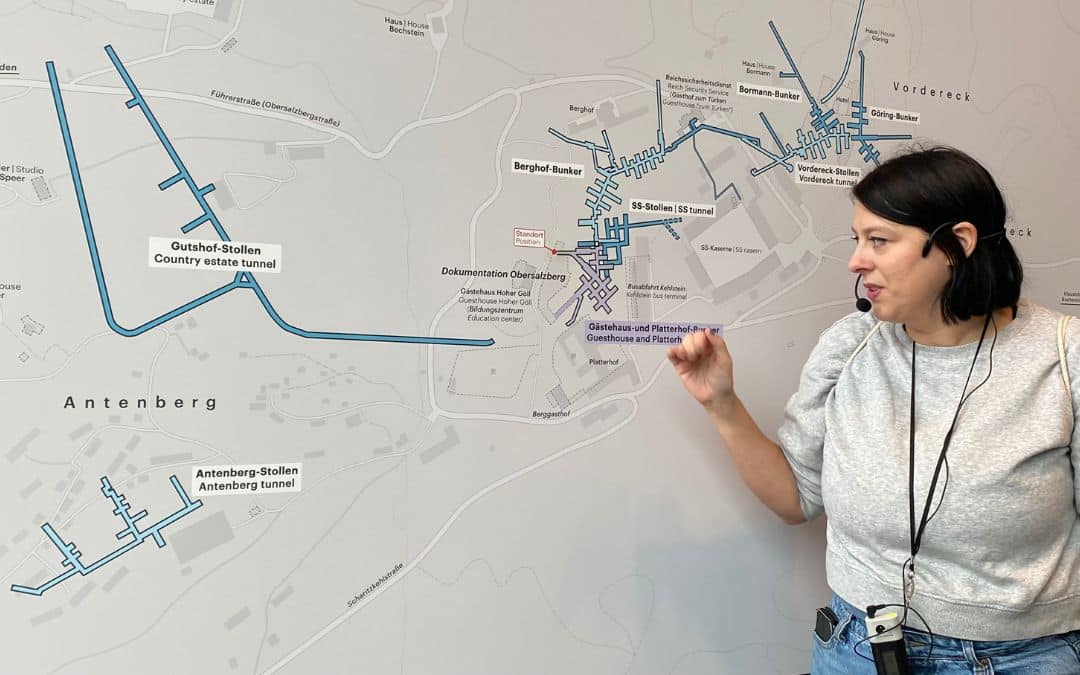
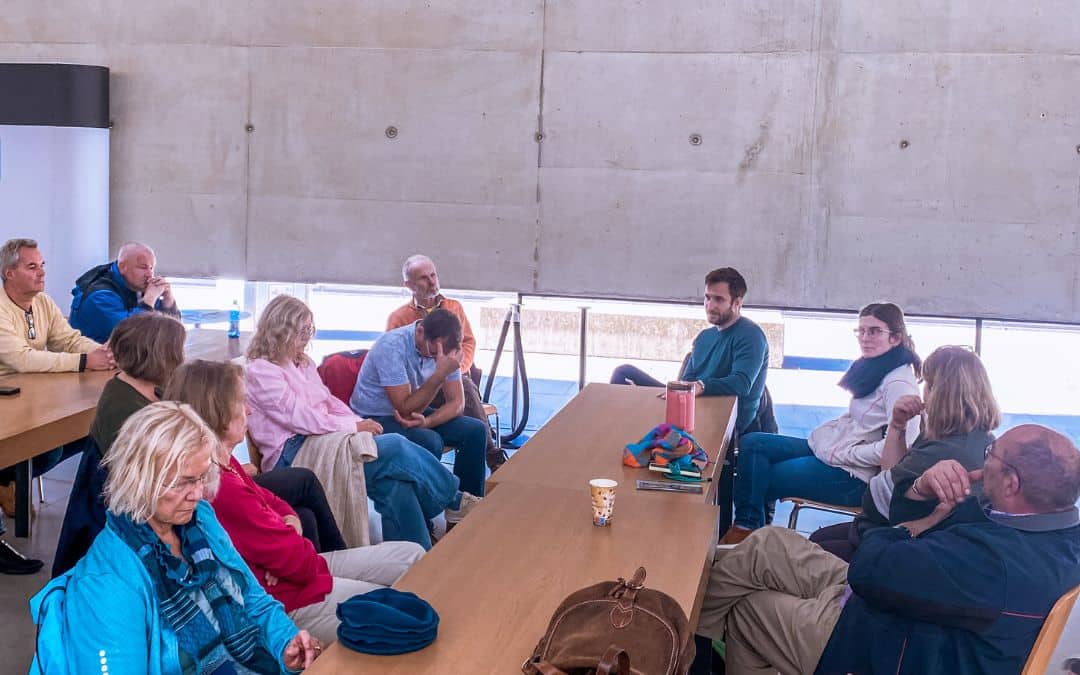

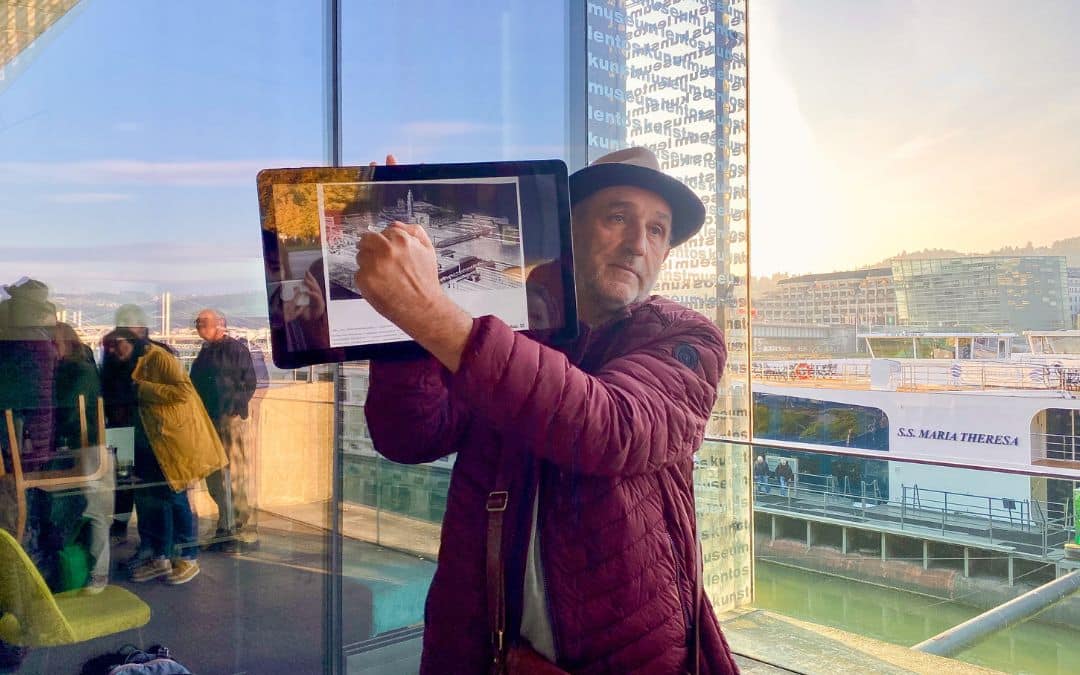
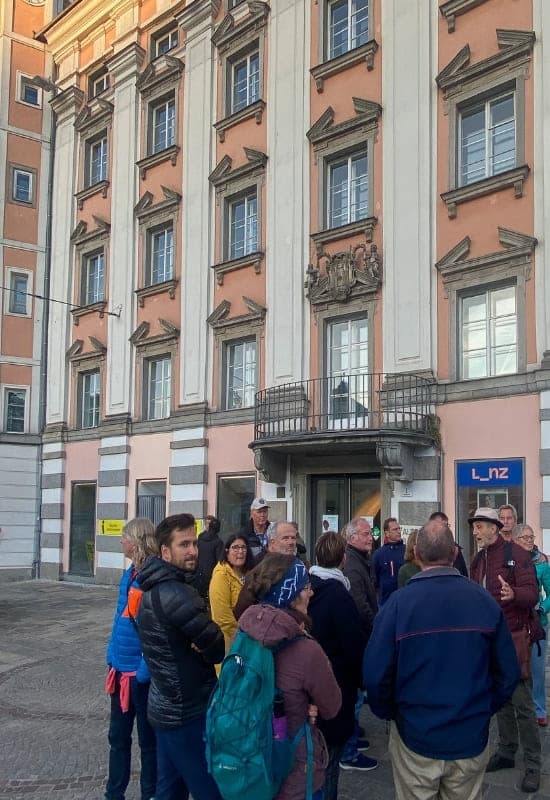

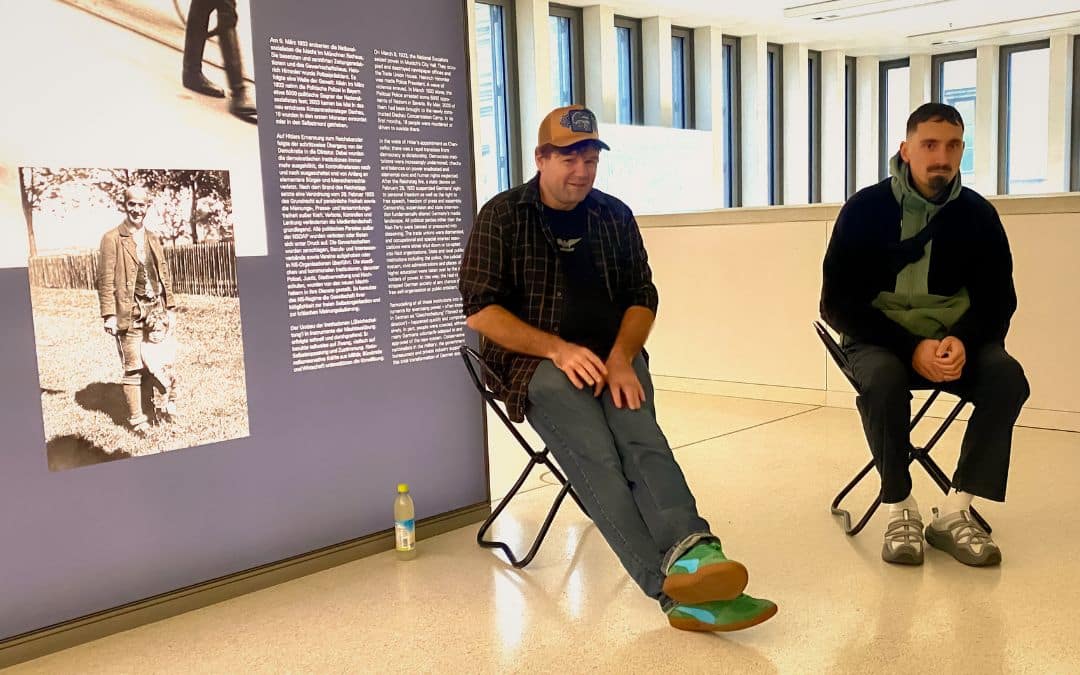
What Does "Bildungsurlaub" (Educational Leave) Mean?
"Bildungsurlaub" is a legal entitlement in Germany that allows employees to take paid time off work in order to attend officially recognized educational programs. It’s granted in addition to regular vacation days, and is designed to promote professional, political, or cultural education.
Because education policy in Germany is determined by the individual federal states, the rules are not uniform: fourteen of sixteen states have laws granting employees the right to educational leave – Bavaria and Saxony are the two exceptions. The exact conditions, deadlines, and application procedures vary from state to state.
In most cases, employees are entitled to five days per year or ten days in two years. Eligible courses are those offered by certified educational institutions – such as the Georg-von-Vollmar-Akademie e. V. in Kochel am See. Topics range from politics, history, and media literacy to sustainability, communication, and culture.
Hannes Liebrandt – The Gifted Performer
When History Becomes the Present
From Tatort Geschichte I already knew that Hannes Liebrandt is a brilliant storyteller – but seeing him live was an entirely different experience. His presence was always a kind of performance, one in which he took us on a journey through time with his words, gestures, and inexhaustible knowledge.
At the Obersalzberg, where Hitler’s Berghof once stood, he showed us where the famous retractable panorama window had been, where the terrace was located where the Berghof circle gathered during work breaks, and how the surrounding landscape had been deliberately used as part of the Führer’s self-staging. He walked us through the so-called “Great Hall” to the table where Hitler and his inner circle planned wars of aggression and mass murder – always with the Alpine panorama in view. Hannes didn’t just recount history; he brought the scene to life, in all its contradictions.
His ability to present complex historical contexts in a captivating yet accessible way made listening to him an experience in itself. Whether at the Obersalzberg, at Hartheim Castle, or on Munich’s Königsplatz, Hannes combined historical facts with personal stories and thoughtful questions. He was never concerned with assigning blame, but with understanding: How could all this happen? And what does it mean for us today?
One of the most powerful moments of the trip for me took place in the atrium of Ludwig-Maximilians-University Munich . Here Hannes talked about the White Rose's last leaflet campaign. He took us along the path that Sophie and Hans Scholl had already walked toward the Adalbertstraße exit after distributing about half of their leaflets, when they turned back to throw the remaining ones down from the gallery. Together we walked to that very spot – now marked by a memorial plaque. It was here that the janitor discovered them and held them until the Gestapo arrived. Standing there, at the place where a single fatal decision sealed the death sentence of these young people, moved me deeply.
During the closing session, all participants agreed: Hannes Liebrandt's captivating way of telling stories made this seminar an unforgettable experience.
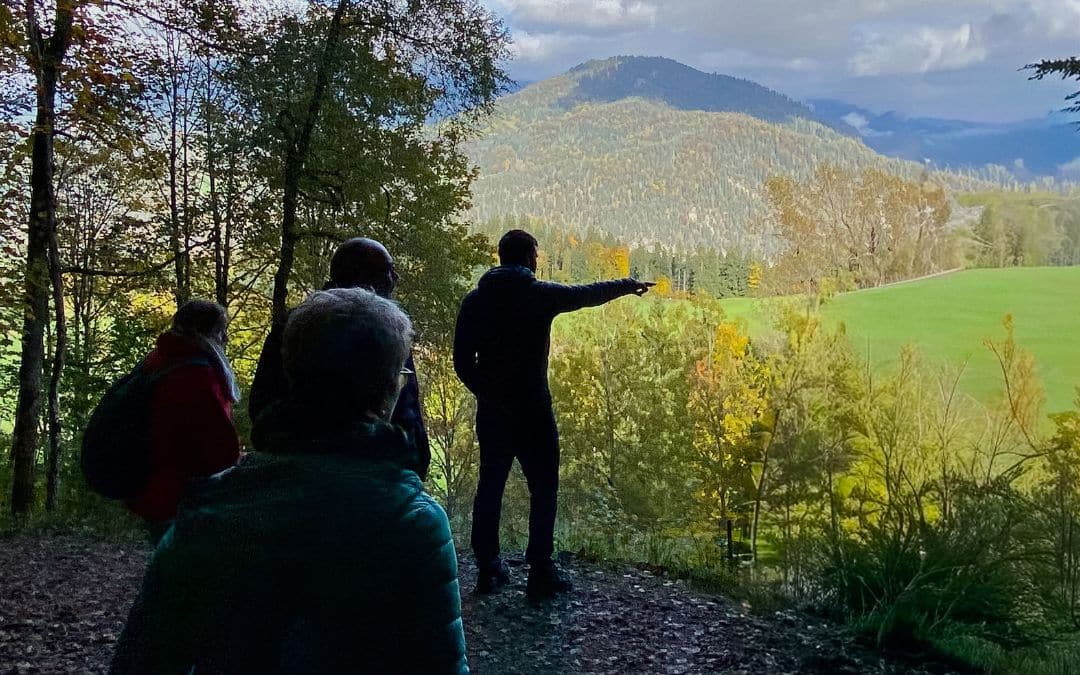

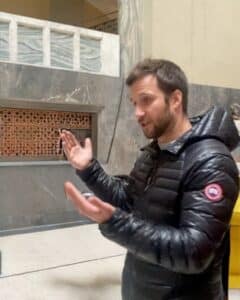
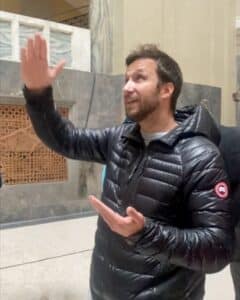
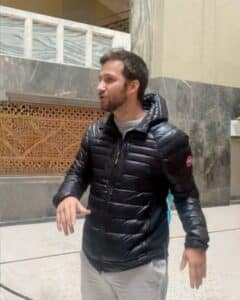

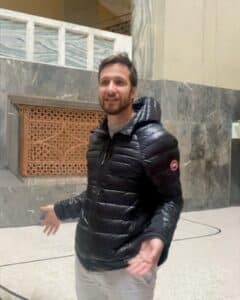
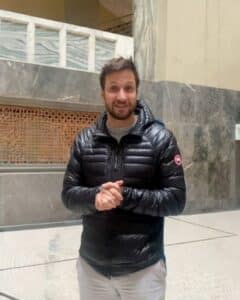
Always on the move: Hannes tells us about the Scholl siblings' last leaflet campaign at the original location, the atrium of Ludwig Maximilian University in Munich.
The Georg-von-Vollmar-Akademie
A Place of Remembrance - and Renewal
After an intense week, our group parted ways following the visit to the White Rose Memorial at the atrium of Ludwig Maximilian University. I took the train and bus back to Kochel am See, to spend two more days in the guest house of the Georg-von-Vollmar-Akademie and explore the beautiful surroundings. Even the building itself tells a story: the baroque Aspenstein Castle was once the home of Baldur von Schirach, the former Reich Youth Leader. After the war, it was expropriated and later transformed into the educational center of Bavaria’s Social Democratic Party. Today, it has become a place of encounter – where political education, lived democracy, and historical awareness come together.
In the foyer of the guesthouse still stands the large globe — a gift from Hitler to von Schirach – serving as a silent reminder of the time when power and ideology once resided here. All the more remarkable, then, is how profoundly the place has changed: into a house of dialog that welcomes people from all backgrounds to learn together.
At breakfast on Sunday morning, I couldn’t help but smile: in a niche of the dining room hangs a photograph of Willy Brandt, cigarette in the corner of his mouth and a ukulele in his hand – I saw him once, back in 1983, at the great peace demonstration in Bonn’s Hofgarten. Many things here evoke a sense of the past: pale green oilcloth table covers, fabric roses on the tables, and a faint air of social democratic nostalgia. And I absolutely have to mention the brilliant kitchen team, who conjure up varied and delicious meals from local ingredients.
As a seminar participant, you feel welcome and in good hands here. The location above Lake Kochel ensures peace and quiet and a panoramic view. One thing is certain for me: I'll be back!

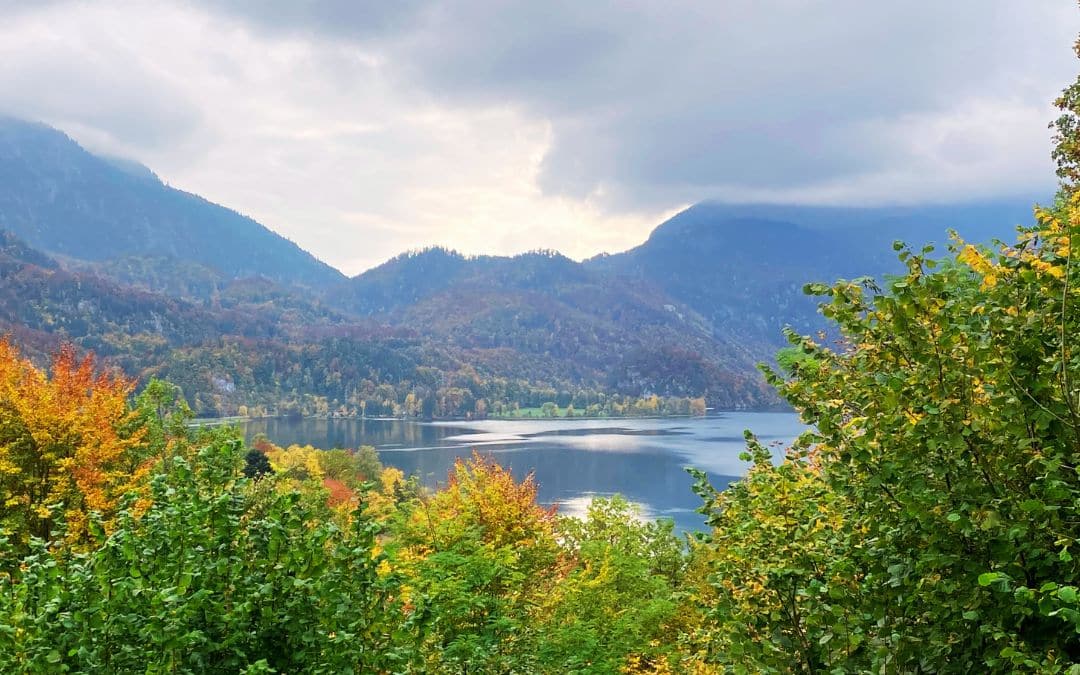
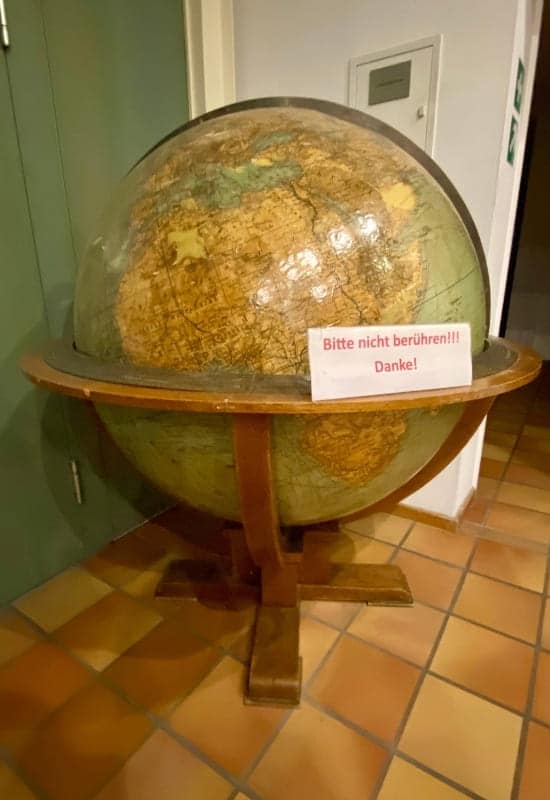
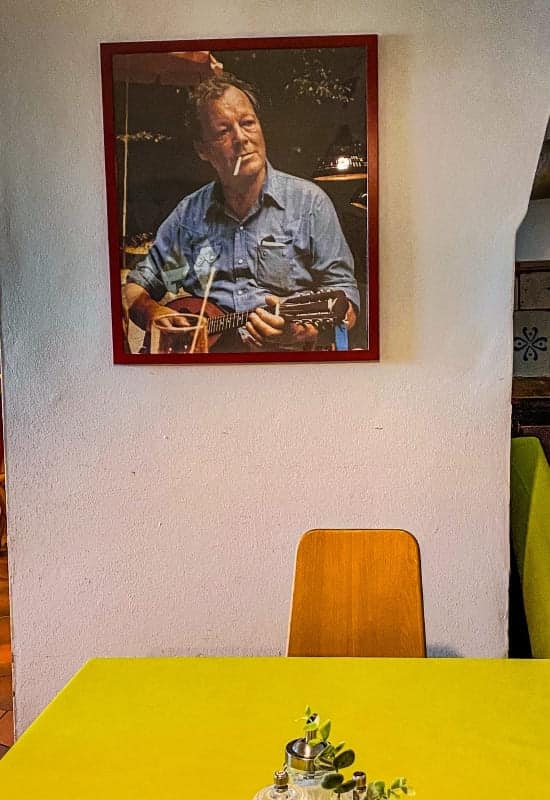
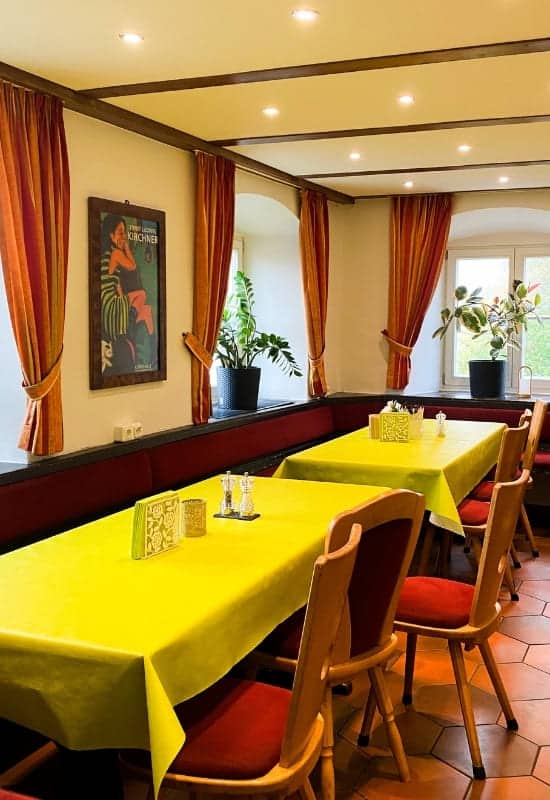
Educational Leave with the Georg-von-Vollmar-Akademie – Could This Be for You?
Not everyone enjoys traveling in a group. Some prefer to decide spontaneously where to have their morning coffee, while others appreciate the exchange and structure that come with an organized trip. Educational leave isn’t for those who equate vacations with switching off – but it’s perfect for anyone open to new perspectives, conversations, and inspiration.
The group on our study trip with the Georg-von-Vollmar-Akademie was wonderfully diverse: teachers, administrative staff, social workers, a few retirees – and, what I especially liked, people from all over Germany. They were individuals in different stages of life, united by curiosity and a desire to keep learning. Many were seasoned participants in educational leave programs, others simply came because they were interested in the topic. In the end, everyone felt they took away more than just impressions: thought-provoking questions and new perspectives.
Educational leave with the Georg-von-Vollmar-Akademie is ideal for you if…
- you’re interested in history, politics, or culture
- you enjoy discussing and reflecting in a group
- you want to learn and develop personally
- you’re open to different viewpoints
- you’re willing to engage with difficult topics
- you enjoy spending a few days in the company of like-minded people
It might be less suitable if you…
- prefer to sleep in and travel spontaneously
- dislike following a structured program
- travel mainly to relax and unwind
- tend to avoid debates or confrontation
- don’t want to deal with challenging subjects
- value a high level of comfort (we stayed in pleasant mid-range hotels, and the bus could feel a bit cozy at times 😉)
For those who embrace the concept, it quickly becomes clear: educational leave isn't a school trip for adults, but an inspiring opportunity to step back from everyday life and broaden your horizons. And the best part? You don’t just travel through landscapes – you travel through worlds of thought: together, curious, and full of “aha” moments.

Conclusion — What Remains?
This trip was not a vacation in the traditional sense - it was more intense, more challenging and more enriching than I had expected. Anyone who embarks on a "Bildungsurlaub" doesn’t just return home with new impressions, but with questions. And with the desire to look more closely – at history, at society, and sometimes at oneself.
What impressed me most was the mixture of perfect organization, in-depth knowledge and exciting encounters. The Georg-von-Vollmar-Akademie offers space and a framework for political education and historical research. And Hannes Liebrandt has the rare gift of conveying historical connections so vividly that they stay in your mind – and resonate long after.
At Ludwig Maximilian University, where the Scholl siblings distributed their final leaflets, the circle closes. History does not fade. It stays with us, shapes us, and challenges us – every single day.
Continue Reading
If you are interested in German history and the culture of remembrance, then read on here:



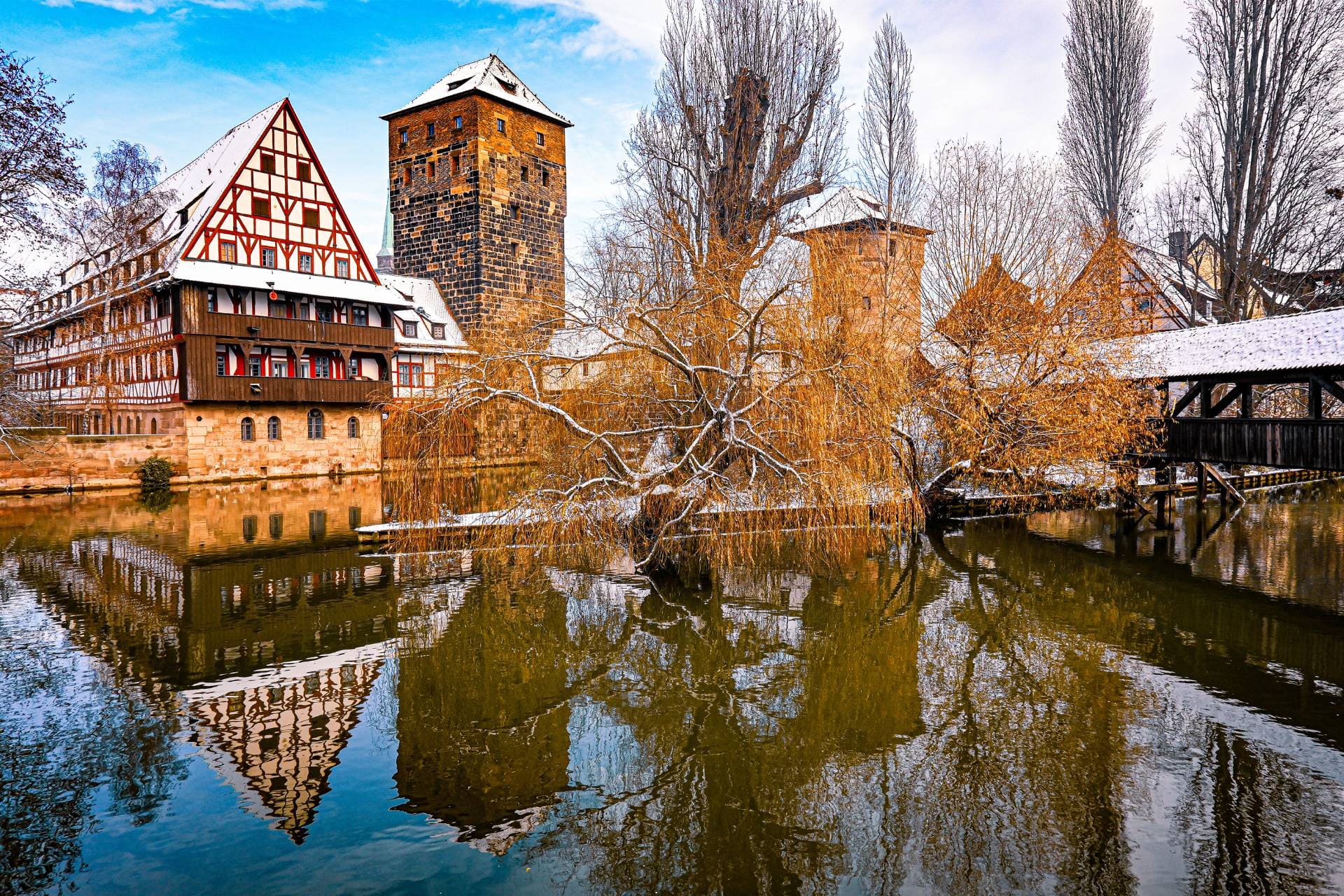
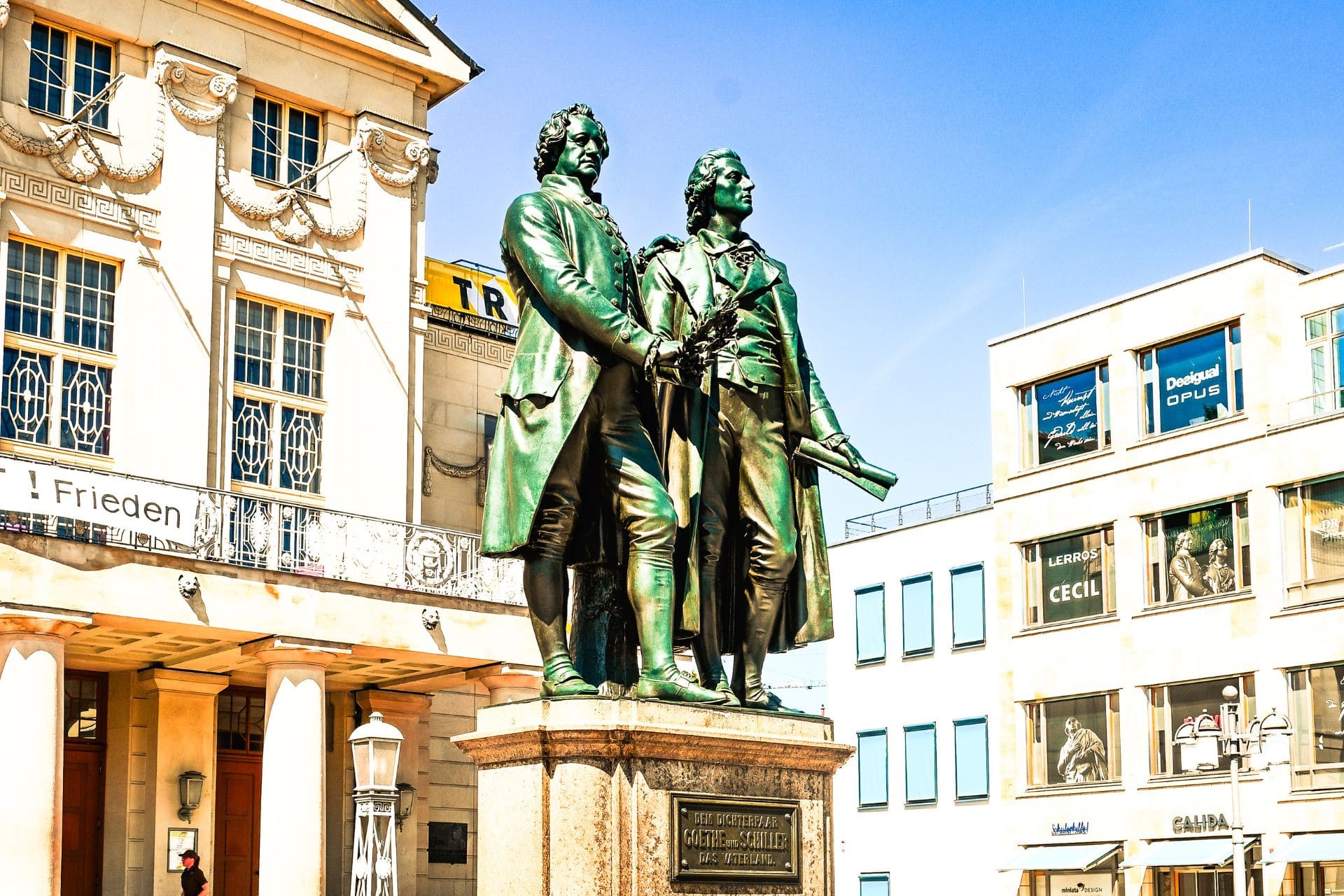
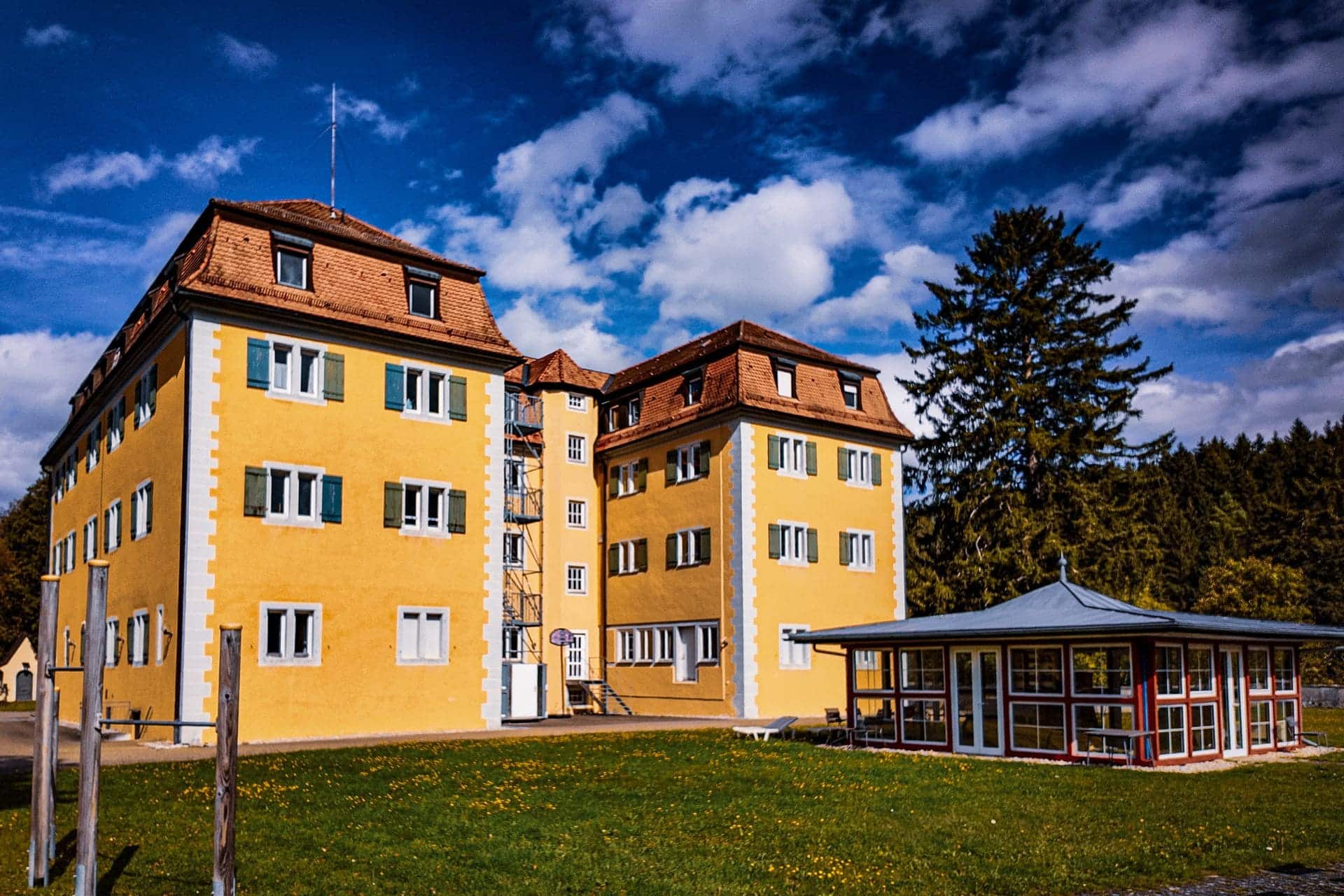
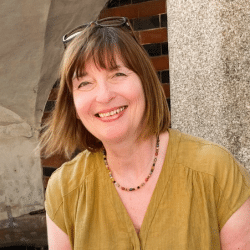
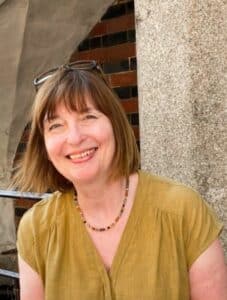
I enjoyed reading Angelika's article about our educational trip to Obersalzberg, Linz, Mauthausen, Hartheim, and Munich, and I highly recommend the blog angiestravelroutes.com, as I really like the content and ideas as well as the lively yet structured presentation.
I will long remember this journey through German and Austrian history, as the impressions of all the places we visited, each in their own unique way, show how important it is to strengthen our democracy and ensure that right-wing extremism has no chance of establishing itself in our society.
Dr. Hannes Liebrandt was a truly impressive seminar leader thanks to his knowledge and teaching skills, and the organization and support provided by the Georg von Vollmar Academy during the educational leave was once again outstanding.
Not to mention the great discussions with the very friendly and interested participants, both during the day and in the evenings in a relaxed atmosphere.
Dear Marion,
Thank you very much for your wonderful comment! Everything about this trip was just perfect, including the open-minded and friendly fellow travelers 😃. I am already looking forward to seeing you again in Kochel in the spring.
Love,
Angelika
As one of the participants on this trip, I am delighted with the successful review of this really intensive week together.
I often recommend the Vollmar Academy when it comes to educational leave.
When it comes to traveling, I will now recommend angiestravelroutes.com just as enthusiastically.
Your personal and empathetic view of this trip paired with facts, tips and good pictures really appeals to me.
Dear Renate,
Thank you so much for your kind and appreciative comment! I'm very happy that you like the article about our trip, and of course also if you recommend my blog😉 It really was an intense week, and working on this post has deepened the impressions once again. Hope to see you soon for a Tatort Geschichte Live!
Warm regards,
Angelika